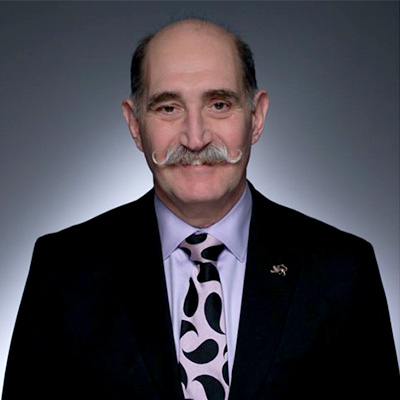Lloyd Ratner, MD, MPH, Director of Renal and Pancreatic Transplantation at NewYork-Presbyterian/
“Whereas a renal transplant would involve removing a kidney and replacing it with one from another individual, a renal autotransplant involves the removal of one’s own (diseased) kidney from the body, treating it outside of the body, and then returning the kidney to the same patient,” says Dr. Ratner. “This is done to address life-threatening conditions, such as a tumor or aneurysm, or to provide access to address issues with the ureters.”
Below, Dr. Ratner discusses which conditions can benefit from a renal autotransplant, and why having a multidisciplinary team is essential for a successful autotransplantation program.
What conditions can be treated with an autotransplant?
There are three main conditions for which we typically perform kidney autotransplants: renal artery aneurysms, loin pain hematuria syndrome (LPHS), and Nutcracker syndrome. If you put in an endovascular stent in some patients with renal artery aneurysms, it’ll end up knocking off the blood supply to part of the kidney because they’re either in a first order branch or at a bifurcation. In those cases, we perform an autotransplant to remove the kidney, repair the aneurysm on the back table, and then reimplant the kidney.
In people with LPHS, which has historically been difficult to treat, patients experience severe renal colic pain and hematuria. In these cases, the issue is with the ureter. The ureter is dyskinetic and causing debilitating pain. For these patients, we would remove the kidney and ureter, completely denervate them and then retransplant the kidney. Similarly, in Nutcracker Syndrome, the veins of the left kidney become obstructed, so an autotransplant allows us access to clear the obstruction.
There are also some tumors which may be appropriate for a renal autotransplant. For instance, there are times when, after removing a ureteral tumor and the affected ureter, it’s difficult to get the ends of the ureters back together; an autotransplant helps make that possible. Another example is a renal tumor, which may not be amenable to an in vivo partial nephrectomy. That would require the tumor being excised on the back table during an autotransplant. We’ve also done autotransplants for people with ureteral injuries.
What helps you determine when to perform a renal autotransplant?
First, when assessing treatment options, we opt for the procedure that is the simplest and has the quickest recovery. Second, we want to preserve kidney function as much as possible. And third, we want to make sure that there’s a satisfactory outcome. If there was something easier than a renal autotransplant that would give the same kind of satisfactory outcome and preserve kidney function, we’d go that route.
What is preparation and recovery like?
One of the biggest risks of an autotransplant is that the kidneys could clot. Anytime you’re operating on major vessels, there is always the risk they could clot off. So, at least in the perioperative period, these patients generally need to be on blood thinners, although not forever.
We currently do the removal of the kidney laparoscopically, but we’ve been training to perform this robotically, which will improve recovery time even further. We tell patients to expect to be in the hospital for five to seven days afterwards. Patients are pretty much back to full speed in about four to six weeks. That should be even shorter once we start performing the autotransplants robotically.
Why is having a multidisciplinary team important when performing autotransplants?
Conditions that are treated with renal autotransplants don’t fall under just one specialty but rather across three: transplant, urology, and vascular surgery. Autotransplants should only be done at centers that perform transplant surgeries.
At NewYork-Presbyterian, we take a multidisciplinary approach to all our care, and autotransplant is no different. There really isn’t another program like this in the New York metropolitan area. It takes real specialized care because, for example, a vascular surgeon may be able to fix the vessel, but they don’t know how to transplant kidneys and take care of them. That’s why our renal autotransplant program is made up of transplant surgeons, like me, vascular surgeons like Nicholas Morrissey, MD, and urologists like Ojas Shah, MD. While patients may come in through any one of us, we collaborate on a rigorous evaluation process to determine the optimal approach for each individual case that places an emphasis on preserving kidney function and patient quality of life.




